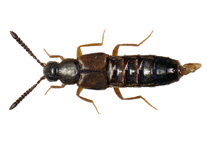Abstract
Chlidoplitis and Megahoplitis are closely related Palaearctic subgenera of the osmiine bee genus Hoplitis (Megachilidae) containing nine and two species, respectively. Analysis of female pollen loads and field observations suggest that all species are pollen specialists. Whereas the H. (Chlidoplitis) species are probably all narrowly oligolectic and exclusively collect pollen on Allium (Alliaceae), Haplophyllum (Rutaceae), Reseda (Resedaceae), Teucrium (Lamiaceae), Trifolium (Fabaceae) or Hedysareae (Fabaceae), the H. (Megahoplitis) species show a close affinity to Carduoideae (Asteraceae) as pollen hosts. The few data available suggest that the H. (Chlidoplitis) species nest in preexisting insect burrows in the ground and use either chewed leaves or mud as nesting material. The nesting biology of the subgenus Megahoplitis remains unknown. The taxonomic revision of the subgenera Chlidoplitis and Megahoplitis revealed the existence of two undescribed species: H. (Chlidoplitis) haplophylli spec. nov. from southeastern Central Asia and Hoplitis (Chlidoplitis) allii spec. nov. from the Levant. Identification keys for the species of both subgenera are given including the hitherto unknown male of H. (Megahoplitis) bombiformis.

